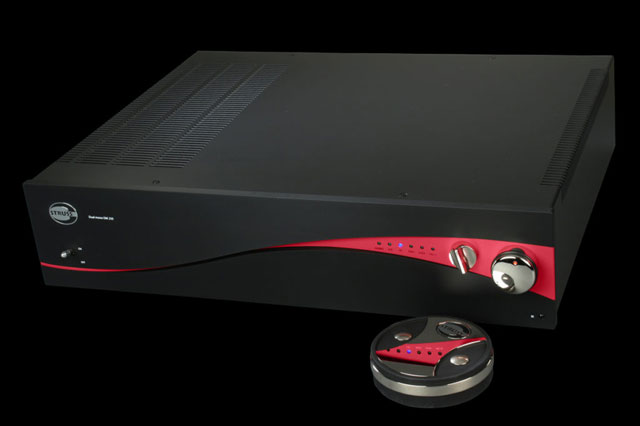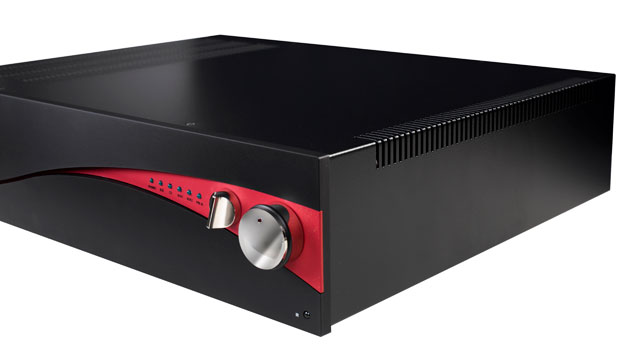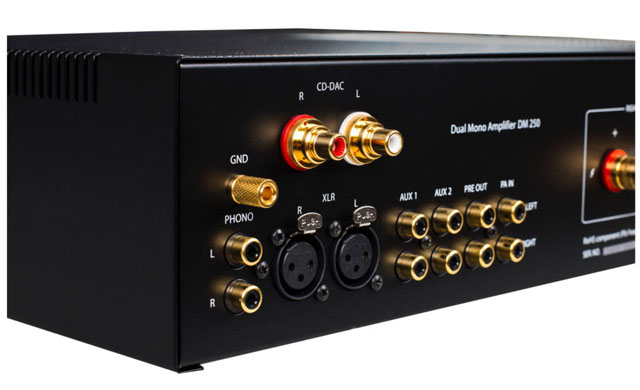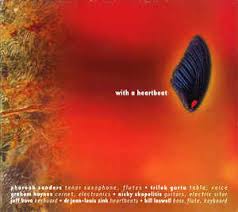Struss Audio DM250 Integrated amplifier by Clement Perry

 When Worlds Collide – compliments of the World Wide Web, and the comfort of our easy chairs, we can discover new and exciting things from the most remote parts of our planet. Back in 2003, I made my first (of many) cross-Atlantic excursions to Munich’s High-End Audio show. I was a kid in a candy store. It was here where I discovered a treasure trove of incredible high-end products that were foreign to me. Surprisingly, about ninety-nine percent of these products had never touched US soil. High-End, Europe’s equivalent to the early ’90’s CES, is the biggest and most sought after event in the high-end audio world. While most are usually handsomely built, there were a few that resembled an alien spacecraft. Most are priced out of us ordinary folk’s price range. But make no mistake, it is here at High-End Munich, where talented designers from all over the world converge. And it was here where I first heard of Struss Audio of Poland, the very subject of this review. I never saw them personally myself. However, the news came from my mutual friend Enzo, who also enjoys attending the High-End show every spring. Enzo, who lives in Amsterdam, wrote me last year ranting over Struss Audio DM250 integrated. He wouldn’t stop. But of course, I listened and apologized for missing the show entirely (due to work constraints). However, I looked into the company after reading Enzo’s enthusiastic email, contacted Struss Audio’s USA/Canadian distributor, and mentioned a possible review sample. Upon getting the okay, I did my due diligence and looked up the company. As predicted, Struss Audio may be new to me and you, but Struss Audio has a rich and storied past.
When Worlds Collide – compliments of the World Wide Web, and the comfort of our easy chairs, we can discover new and exciting things from the most remote parts of our planet. Back in 2003, I made my first (of many) cross-Atlantic excursions to Munich’s High-End Audio show. I was a kid in a candy store. It was here where I discovered a treasure trove of incredible high-end products that were foreign to me. Surprisingly, about ninety-nine percent of these products had never touched US soil. High-End, Europe’s equivalent to the early ’90’s CES, is the biggest and most sought after event in the high-end audio world. While most are usually handsomely built, there were a few that resembled an alien spacecraft. Most are priced out of us ordinary folk’s price range. But make no mistake, it is here at High-End Munich, where talented designers from all over the world converge. And it was here where I first heard of Struss Audio of Poland, the very subject of this review. I never saw them personally myself. However, the news came from my mutual friend Enzo, who also enjoys attending the High-End show every spring. Enzo, who lives in Amsterdam, wrote me last year ranting over Struss Audio DM250 integrated. He wouldn’t stop. But of course, I listened and apologized for missing the show entirely (due to work constraints). However, I looked into the company after reading Enzo’s enthusiastic email, contacted Struss Audio’s USA/Canadian distributor, and mentioned a possible review sample. Upon getting the okay, I did my due diligence and looked up the company. As predicted, Struss Audio may be new to me and you, but Struss Audio has a rich and storied past.
The Struss Audio Dual Mono 250 (herein DM250), is the latest product to come from the company’ designer Zdzisław Hrynkiewicz-Struss, who began his career in 1975, at the Polish Academy of Science as a specialist in both engineering and electronics. Some years later, he collaborated with Finnish professor Dr. Matti Otali at Phillips Electronics, where a long-time partnership formed. In this partnership, Struss learned to use sophisticated electronic measuring equipment used in the development of his now patented amplifier circuits. The Struss website states: “His main preoccupation was the application of low signal amplification process to measurement techniques. His experience in this field has helped in designing and implementing new foundations for amplifiers available at that time [1975].
After gaining much success through various versions of the Struss design, the company officially launched Struss Audio in back in 1995. By this time, the company had perfected their patented preamp circuit; they named the Harmonics and Phase Conversion System (HPCS). Further, the circuit topology creates an even-order harmonic distortion through the compliments of J-FET transistors. This specialized circuitry is said to behave much like that of a vacuum tube. Reading this on their website, it states, “…The HPCS system is a solution that, introducing some subtle modifications in the spectrum and dynamics of the acoustic signal, adapts the sound of the DM250 amplifier to the subjective needs and characteristics of human hearing. To a certain extent, it resembles the effects obtained in tube amplifiers, but without the inconvenience of using tubes.”
Rated at about 130 watts per channel, the DM250 is a true dual-mono/Class A/B, integrated amplifier design by way of its dual-mono 500W toroidal transformers. The output stage employs a specialized type of convection cooling used in previous Struss designs that also provides Class A performance for the first 10 watts.


Physically the DM250 is quite attractive in its red/black curvaceous front fascia that is adorned by a power-On-Off toggle switch on its left flank and a small row of input LED’s, Input and a Balance knob on its right. The DM250 has four inputs (3 RCA and 1 XLR), one RCA preamp output for added versatility. The PA Input proved very interesting, especially for devices with volume control (which proved a big plus with the Laufer Teknik Memory Player). A big surprise for vinyl lovers is that the DM250 comes (standard) with its own MM cartridge/phono input. A weighty circular-shaped remote control also comes standard. Setup was easy thanks to the easy to reach large 5-way binding posts located on the DM250’s rear panel. Cables were the excellent sounding and affordable English-made Dynamique Audio Zenith and Halo 2 series RCA interconnects, RCA digital, and AC cords (reviewed here).

 Cueing up the transcendental Across Time from legendary jazz saxophonist Pharoah Sanders’ 2004 release “With a Heartbeat” proved insightful about the DM250’s overall balance. Pharoah and bassist Bill Laswell set the mood on this intensely hypnotic track. Pharaoh’s infamous for his saxophone squeaks and squeals are on display here amid swelling synthesizer chords. Via the DM250, the transparency, weight, and body were present against Pharaoh’s high-pitched vocalizations. It’s as if the DM250 was capable of interpreting Pharoah’s high-pitched squeals as some form of a lyrical plea to me. In this regard, his playing has more understanding, depth, and emotional impact. I was somewhat surprised by how much I was able to interpret from a purely musical standpoint – not just sounds – when listening through the lens of designer Zdzisław Hrynkiewicz-Struss. Another outstanding feature of the DM250 was how authoritative, yet non-pushy the sound emanated into the room. Instead of the usual “in your face” approach noted in many solid-state designs. While not aggressive, the DM250 is neither soft nor too pleasant. Its neutrality combined with harmonic depth is remarkable. It’s neither too fast nor slow. It’s a combination of what separates excellent designs from the ordinary.
Cueing up the transcendental Across Time from legendary jazz saxophonist Pharoah Sanders’ 2004 release “With a Heartbeat” proved insightful about the DM250’s overall balance. Pharoah and bassist Bill Laswell set the mood on this intensely hypnotic track. Pharaoh’s infamous for his saxophone squeaks and squeals are on display here amid swelling synthesizer chords. Via the DM250, the transparency, weight, and body were present against Pharaoh’s high-pitched vocalizations. It’s as if the DM250 was capable of interpreting Pharoah’s high-pitched squeals as some form of a lyrical plea to me. In this regard, his playing has more understanding, depth, and emotional impact. I was somewhat surprised by how much I was able to interpret from a purely musical standpoint – not just sounds – when listening through the lens of designer Zdzisław Hrynkiewicz-Struss. Another outstanding feature of the DM250 was how authoritative, yet non-pushy the sound emanated into the room. Instead of the usual “in your face” approach noted in many solid-state designs. While not aggressive, the DM250 is neither soft nor too pleasant. Its neutrality combined with harmonic depth is remarkable. It’s neither too fast nor slow. It’s a combination of what separates excellent designs from the ordinary.
 Why so many folks I know become addicted to the sound of tubes is a good example here. The music floated through my listening room with a very intoxicating whiff that was reminiscent of the single-ended tube designs. However, I was fascinated by the DM250 control, vitality, and the all-important sense of vigor that gives music life. Another valuable and very reliable tester is the human voice. Listening to the classic Sting rendition of Alien in NY, from the wonderful songstress Somi from her “Petite Afrique” release showed how musically engaging the DM250 is on the human voice. Here Somi sings without effort or emphasis, yet her voice is all there – not just a head – without a body.
Why so many folks I know become addicted to the sound of tubes is a good example here. The music floated through my listening room with a very intoxicating whiff that was reminiscent of the single-ended tube designs. However, I was fascinated by the DM250 control, vitality, and the all-important sense of vigor that gives music life. Another valuable and very reliable tester is the human voice. Listening to the classic Sting rendition of Alien in NY, from the wonderful songstress Somi from her “Petite Afrique” release showed how musically engaging the DM250 is on the human voice. Here Somi sings without effort or emphasis, yet her voice is all there – not just a head – without a body.
The ability for this 125-watt design to dig deep into the underbelly of this recording by way of its translucent window is one of its most apparent attributes. Switching over the Sade and her classic Couldn’t Love You More further demonstrated the DM250’s abilities at the art of communication. Sade’s voice is raspy and sexy against a thumping bass line that kept me engaged and my toes gently tapping. Quite honestly, I was pleasantly surprised at how poised a performer the DM250 proved on such popular and bass-heavy material. The fashion in which the DM250 articulates the music is another standout. It doesn’t emphasize or highlight any of the frequency extremes, no matter the musical genre. High frequencies have just the right amount of sparkle and air without nary a hint of brightness. Yet, at the same time, all the delicacy and weight come through in a way that gives this design high marks, especially on the Tekton Double Impacts. The DM250’s innate quality allows for a more unobstructed view into the music amid a broad 3D soundstage is unique and, in many ways, reminds me of the far more expensive Grandinote gear of Italy. Further, this vast level of transparency and harmonic richness lends to better image definition without the usual cardboard cut-out feel. Don’t get me wrong; images are detailed, but the DM250 provides this in a very realistic manner.
 Impressed by pairing the Struss Audio DM250 with the 10-year-old, one-box Marantz SACD player, I became excited at the possibilities available once I swapped out the Marantz for the two-piece Mola Mola Tambaqui DAC and Laufer Teknik Memory Player combo. Not only did this duo thoroughly enhance the DM250’s sonic excellence, but it further demonstrated the DM250’s desire to perform way beyond its weight class. Hey, it’s $5500 asking price isn’t chicken scratch – but its sheer ability to perform at such a high level has to be witnessed by others too. The DM250 can not only play well with the big boys, but it’s also capable of out-performing many I’ve heard at many times its asking price.
Impressed by pairing the Struss Audio DM250 with the 10-year-old, one-box Marantz SACD player, I became excited at the possibilities available once I swapped out the Marantz for the two-piece Mola Mola Tambaqui DAC and Laufer Teknik Memory Player combo. Not only did this duo thoroughly enhance the DM250’s sonic excellence, but it further demonstrated the DM250’s desire to perform way beyond its weight class. Hey, it’s $5500 asking price isn’t chicken scratch – but its sheer ability to perform at such a high level has to be witnessed by others too. The DM250 can not only play well with the big boys, but it’s also capable of out-performing many I’ve heard at many times its asking price.
In a word, the DM250 sounds as musically engaging as I’ve encountered from an integrated amplifier. In many ways, it’s very reminiscent of the Tekton Audio Double Impact loudspeaker. Both enjoy performing beyond what you may come to expect, considering both costs less than $6k. The DM250’s grace and dynamic prowess, coupled with its uncanny sense of composure, give this integrated design lots to admire. It’s smooth yet detailed, harmonically rich yet its high frequencies glisten. That it comes with a remarkably robust preamp section with a standard phone section only increases its overall value.
Having lived some time with the Italian-made Grandinote electronics for years, one would assume, based on their legendary performance, that I would be somewhat disappointed. Not in the least. No, the Struss Audio DM250 does not have the same level of intimacy as the beloved Grandinote. Nor is it as convincingly tender on voices as this 37 watts Italian Stallion. Duly noted the DM250 grips onto my Tekton loudspeakers with a remarkable sense of control – more so than the Grandinote. The DM250 will play louder with less constraint and seems to enjoy the daily chores of reproducing various types of music at room rocking volumes.
 Most importantly, the DM250 never sounds aggressive even when I crank it. Pairing it with the 98 dB efficient Tekon Double Impact SE’s has its apparent advantages due to these loudspeakers remarkably high sensitivity. In my opinion, this combination creates a symbiotic relationship that is indeed rare in the real world of affordable two-channel audio. Very seldom can you find two components so functional, and yet this affordable. If you admire the sound of the Grandinote components, then consider Struss Audio among that same class of great-sounding solid-state designs that mimics the best in vacuum tube outputs.
Most importantly, the DM250 never sounds aggressive even when I crank it. Pairing it with the 98 dB efficient Tekon Double Impact SE’s has its apparent advantages due to these loudspeakers remarkably high sensitivity. In my opinion, this combination creates a symbiotic relationship that is indeed rare in the real world of affordable two-channel audio. Very seldom can you find two components so functional, and yet this affordable. If you admire the sound of the Grandinote components, then consider Struss Audio among that same class of great-sounding solid-state designs that mimics the best in vacuum tube outputs.
A huge thanks go out to Mr. Zdzislaw Hrynkiewicz-Struss – a man I have never met (yet), that builds a world-class amplifier I never heard of until now. Like Eric Alexander of Tekton Audio (whose caused quite a stir with his affordable loudspeakers), you too, sir, have officially raised the bar for what excellence should cost in today’s competitive market. I hope anyone reading the review will consider hearing the Polish-built Struss Audio DM250 amplifier for themselves. Especially anyone that already owns a pair of loudspeakers as highly-efficient as the Double Impacts, and perhaps has patiently waited for an affordable alternative like the DM250. Imagine this; an elegantly designed solid-state integrated with the brute low-end grip solid-state devices are famous for – but with the midrange of a vacuum tube? The DM250 possesses these sonic attributes in spades. So much in fact, it has now garnered our prestigious Stereo Times Publisher’s Choice! Most Wanted Component for 2020.


clement perry
Specifications:
Price: $5,500
Output:8 Ω / 2 x 130 W (CLASS AB); 4 Ω / 2 x 250 W (CLASS AB)
Minimum impedance load: 1 Ω (instantaneous)
Class A operation up to: 2 x 10 W
Power consumption: STATIC 40 VA – 800 VA (PEAK)
Output impedance: 0.10 Ω
Distortion – THD: 0.1% at 1 W / 8 Ω; 0.025% at 130 W / 8 Ω
Frequency response: 5 Hz – 250 kHz – 3 dB / 1 W / 8 Ω, 10 – 30,000 Hz: ± 0.1 dB
Slew rate: 200 V/μs
Dynamics: 140 dB
Signal – noise ratio: 145 dB (IHF – A)
Inputs: 2 x universal – RCA; XLR Amphenol; separated CD / DAC – RCA; phono MM – RCA, power-in – RCA
Preamplifier: output – RCA
Sensitivity of inputs: 500 mV – universal inputs and dedicated CD / DAC; 250 mV – XLR input; 3 mV – MM input; 0.775 V – power amplifiers
Input impedance: 100 kΩ; universal inputs and CD / DAC; 22 kΩ XLR; 47 kΩ MM; 47 kΩ power amplifiers
Potentiometer (volume): the highest precision model from the Alps – Blue Velvet
Transformers: 2 x toroidal, magnetically isolated 500 VA each
Capacitors filtering the supply voltage: 4 x 15 000 uF – Nippon Chemi-Con
Advanced protection system: against short-circuiting of the loudspeakers and a stream of DC voltage at the output
Remote control: RC5 code (volume)
The DM 250 amplifier fulfills all requirements and standards valid in the EU
Net weight: 16 kg
Dimensions: 430 x 102 x 338 mm
Manufacturer’s warranty: 24 months
Price (when under review):
Struss Audio DM-250: 4.370 EUR
Manufacturer: Struss Audio
Stereo Times Masthead
Publisher/Founder
Clement Perry
Editor
Dave Thomas
Senior Editors
Frank Alles, Mike Girardi, Key Kim, Russell Lichter, Terry London, Moreno Mitchell, Paul Szabady, Bill Wells, Mike Wright, Stephen Yan, and Rob Dockery
Current Contributors
David Abramson, Tim Barrall, Dave Allison, Ron Cook, Lewis Dardick, Dan Secula, Don Shaulis, Greg Simmons, Eric Teh, Greg Voth, Richard Willie, Ed Van Winkle, and Rob Dockery
Music Reviewers:
Carlos Sanchez, John Jonczyk, John Sprung and Russell Lichter
Site Management Clement Perry
Ad Designer: Martin Perry






Be the first to comment on: Struss Audio DM250 Integrated amplifier by Clement Perry